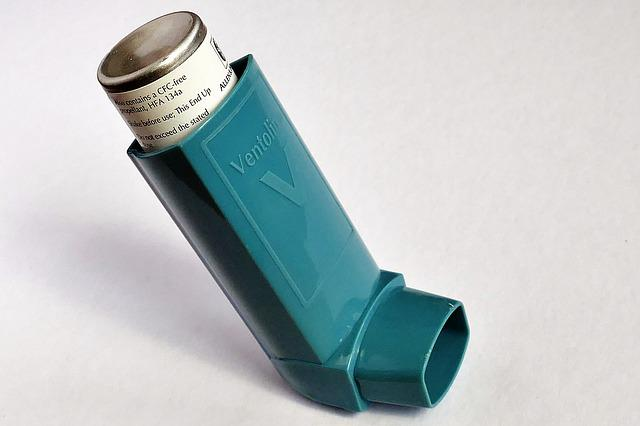What Antibiotics are Good for Chest Infections?


This article outlines various antibiotics used in treating such infections.
Chest infections have diverse causes. However, they do share some common clinical signs and symptoms. Bacteria are the leading cause of all these chest infections. Practitioners prescribe various antibiotics to get rid of chest infections. Chest infections occur largely after colds and flu during winter. Despite the milder symptoms which may improve quickly, some may become serious and even life-threatening.
Infections of the chest can be classified into upper airways infections and lower airways infections.
Upper airway infections can include acute sinusitis, pharyngitis, Ludwig angina, and acute laryngitis.
In comparison, lower airway infections include bronchitis, asthma exacerbations, bacterial pneumonia, chronic obstructive pulmonary disease (COPD), and tuberculosis.
However, all these infections share standard clinical features, including fever, headaches, cough, pain, shortness of breath and excess sputum. Broad-spectrum antibiotics such as penicillin, amoxicillin, clarithromycin, and azithromycin are used to treat these horrendous infections.

Chest infections can occur in the lung or respiratory system. Chest infections are mainly bronchitis and pneumonia. These types of infection are most commonly spread by sneezing or coughing by people who have contracted the infection. This action releases tiny drops of the infections into the air that contain bacteria or viruses that are then breathed in by other people who are nearby. A person can also get infected by sneezing into their hand and touching those germs before touching their mouth.
Although most chest infections are mild and improve on their own, some of them can become quite serious and sometimes life-threatening. A bronchiolitis or acute lung infection typically improves itself in 7-10 days without any medication. If your pulmonary system has severe infections, it may be worth seeing your physician have a look. If severe enough, your doctor will prescribe antibiotic treatment for your chest infection. Below are examples of 7 chest infections and which antibiotics are used to treat them.
Antibiotics for acute sinusitis Infection and inflammation of the maxillary sinus is called sinusitis. Maxillary sinuses are two hollow bodies located on both sides of the nose. Bacteria and allergy reactions cause inflammation of the sinus.
The clinical features include a running nose, tenderness around the cheek, a red flashing face, and fever.
Broad-spectrum antibiotic amoxicillin is the drug of choice for acute sinusitis. The recommended dosage for adult patients is a 500mg capsule, administered orally twice daily. Doctors prescribe the drug to patients to take from 7 to 14 days, depending on severity. In children, antibiotics are available in syrup form. If the patient is allergic to amoxicillin, then replace it with azithromycin.
Pharyngitis is a typical upper tract infection, and it accounts for over 15% of all hospital visitors. Streptococcal bacteria cause this infection. The clinical features include a temperature over 38°C, throat inflammation, and exudate from tonsils.
Fifty years earlier, a single injection of penicillin was considered the standard antibiotic therapy. Currently, oral antibiotics are administered to pharyngitis patients. The prescription of penicillin V potassium, 250 mg three times a day, remains effective against streptococcal bacteria. The drug should be administered for 5 to 10 days. Penicillin has a 90% of streptococcal eradication rate. Erythromycin is considered an alternative to penicillin if the patient is allergic to the penicillin group.
Other antibiotics include cefuroxime and azithromycin.
Asthma is a common chronic disorder of the chest. It affects approximately 10-15% of people worldwide. With asthma, inflammatory cells infiltrate the airways, causing airway obstruction. Asthma is characterised by a productive cough, shortness of breath, tight chest, and sputum, with the sputum quantity increasing in the early morning.
Beta-agonist antibiotics are available for asthma patients. These drugs cause dilation of the bronchi and thus make it easy to breathe. Salmeterol and formoterol are long-acting beta-agonist antibiotics used in asthma patients in the United Kingdom.
Albuterol and levalbuterol are given in inhalers, and these drugs are most effective during the acute attack of asthma. See more about Beta-2 agonists on the National Institute for Health and Care Excellence website.

Antibiotics for pneumonia
Pneumonia is a common chest infection, with approximately 5-6 million patients presenting each year worldwide. It has the highest mortality rate in the United States. Pneumonia infections occur in the lung or the bronchial system that are affected by respiratory infections. The bronchial tubes are an airway connecting the lungs with the airway. Pneumonia causes the nasal cavity filled with contaminated air to reduce respiration capacity and in fact, pneumonia can make breathing difficult. Pneumonia usually arises through a viral infection. Fungal infections can sometimes cause pneumonia, but it is rarer and occurs in people who don't have the strongest immune system.
The most common bacteria involved in pneumonia is S pneumonia. A sputum culture test is required to identify the bacteria. Patients with pneumonia experience an onset of fever, dry cough, and shortness of breath.
Other signs and symptoms include chest discomfort, sweating of hands and feet, head pain and muscle pain. The diagnosis is based on patient history, clinical features, and laboratory evaluation.
Practitioners prescribed specific antibiotics after evaluation of the sputum of the patient. Most commonly, clarithromycin or azithromycin are recommended. 500 mg clarithromycin is given orally for 7 to 14 days. Other antibiotics include moxifloxacin, Gemifloxacin, and doxycycline.
Apart from this, symptomatic treatment has also been given.
Chronic obstructive pulmonary disease (COPD) is a disorder characterised by obstruction of airways due to chronic infection or emphysema. Emphysema is an abnormal pathological enlargement of air spaces.
This disease affects people above 50 years of age who usually complain of excessive sputum, productive cough, and shortness of breath. The leading cause of COPD is cigarette smoking. Around 90% of patients who suffer from COPD have a history of smoking. The remaining 10% of patients are caused by exposure to air pollution and occupational dust. Smoking destroys the air spaces of the lungs. Treatment requires prevention and smoking cessation.
Antibiotics are given to patients with COPD to prevent exacerbation of the disease and treat bronchi infections. Doxycycline is the drug of choice in a patient with COPD. 100mg doxycycline orally twice a day is prescribed to treat the infection. Other antibiotic options include cephalosporin, trimethoprim, and macrolide.
Bacterial tuberculosis has the highest mortality rate in the world. M tuberculosis bacteria is the cause of this deadly disease. In the United Kingdom, an estimated 4,125 people were notified of having tuberculosis in 2020. Refer to the UK Health Security Agency for more information.
The clinical findings of pulmonary tuberculosis include weight change, fever, night sweating, cough with sputum, and loss of appetite. In the advanced stages, the patient experiences blood in the sputum, which can be lethal. The patients have a family history of tuberculosis. The patient's sputum is evaluated in the laboratory to make the diagnosis.
Anti-tuberculosis medicines are given to eliminate the bacteria. These anti-tuberculosis drugs include Isoniazid, rifampin, pyrazinamide, ethambutol, and streptomycin. However, these drugs have some common side effects on our body, including hepatitis, rash, fever, bone marrow suppression, nerve damage, interactions with other drugs, and stomach upset.
Laryngitis is the inflammation of the larynx, which can be lethal because the microbes can advance to the lungs and cause serious complications. The antibiotics macrolide are the drug of choice in larynx infection. 250mg erythromycin is prescribed orally for 7 to 10 days.
Your doctor could diagnose your chest infections by observing your symptoms and checking in on you. This can be done by simply asking you to detail your symptoms. The doctor will also ask about your medical background and your relatives' medical history. This examination can also involve measuring your temperature. A blood test can also be done as sometimes doctors need to check the amount and quantity of oxygen that you receive in your blood if they are worried about blood-oxygen levels. Blood-oxygen levels can be measured using an oximeter which is placed on your finger. As part of your physical examination, doctors will also listen to your chest with a stethoscope.
Many chest infections are not serious and can get better relatively quickly. You may be okay without seeing a doctor unless symptoms get worse which may indicate a larger infection.
Chest infections usually improve on their own and do not require a visit from the cardiologist. If you have asthma, you need to see a doctor monitor this condition. They may have given you advice about boosting inhaler drug dosages to avoid infections. If not, consult a doctor about chest infections or other health conditions. If you feel the symptoms, mentioned above getting better, you may be well on your way to recovery. However, if symptoms persist or get worse it is advised you seek medical attention.
There are ways you can prevent or reduce chest infections. Keeping our hands, for example, reduces the risk of bacteria contaminating our system. You may spread the bacteria responsible for causing chest infections by coughing or sneezing. Therefore, it is essential for you to cover yourself when you cough or sneeze. You should also dispose of used tissues instantly.
If in doubt about any illness, it is always recommended that you see a doctor. But hopefully the information above has made you more aware of the causes and symptoms of chest infections as well as provided you will knowledge about the various antibiotics used to treat such infections.
For a full range of blood tests and medications, visit our Welzo Online Pharmacy Page. For more details, click here.










Plus get the inside scoop on our latest content and updates in our monthly newsletter.